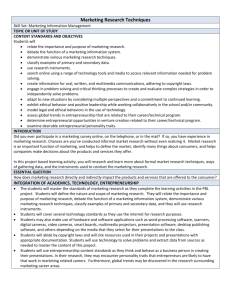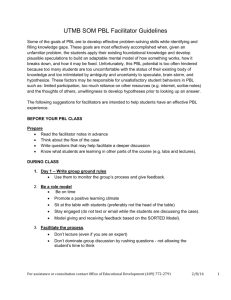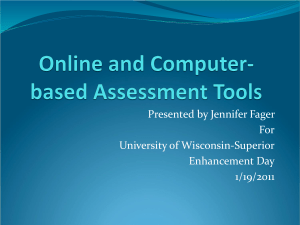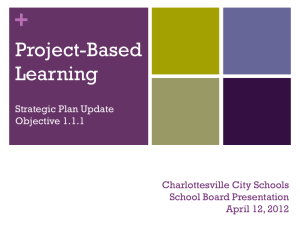Supply and demand play an important part in the equation as well
advertisement
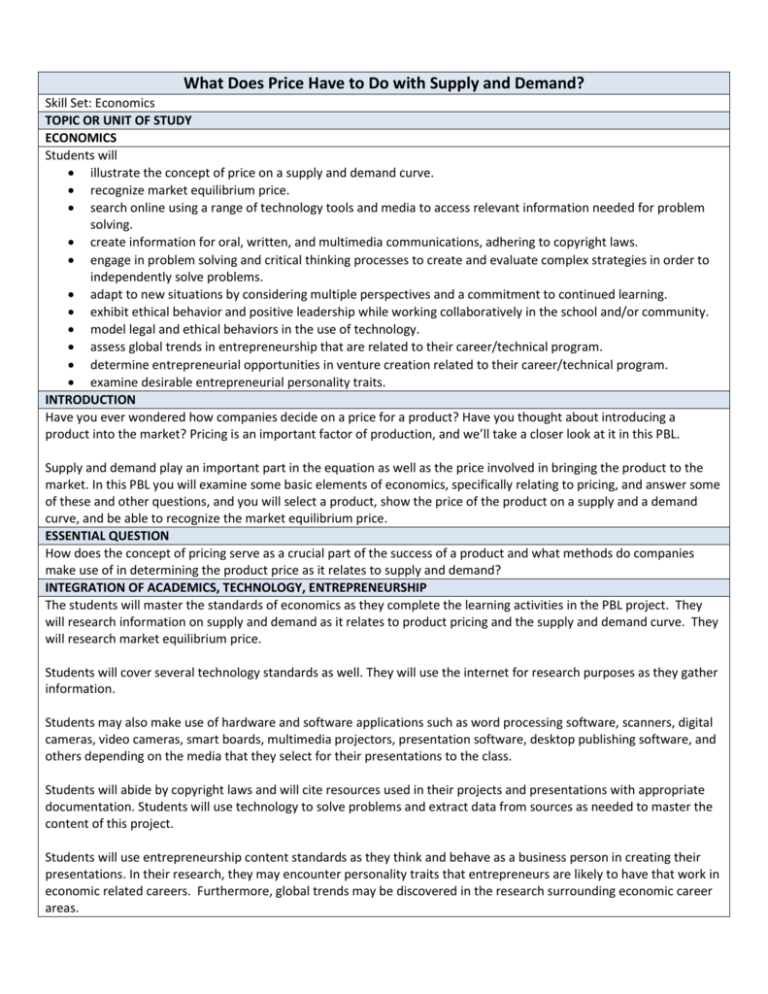
What Does Price Have to Do with Supply and Demand? Skill Set: Economics TOPIC OR UNIT OF STUDY ECONOMICS Students will illustrate the concept of price on a supply and demand curve. recognize market equilibrium price. search online using a range of technology tools and media to access relevant information needed for problem solving. create information for oral, written, and multimedia communications, adhering to copyright laws. engage in problem solving and critical thinking processes to create and evaluate complex strategies in order to independently solve problems. adapt to new situations by considering multiple perspectives and a commitment to continued learning. exhibit ethical behavior and positive leadership while working collaboratively in the school and/or community. model legal and ethical behaviors in the use of technology. assess global trends in entrepreneurship that are related to their career/technical program. determine entrepreneurial opportunities in venture creation related to their career/technical program. examine desirable entrepreneurial personality traits. INTRODUCTION Have you ever wondered how companies decide on a price for a product? Have you thought about introducing a product into the market? Pricing is an important factor of production, and we’ll take a closer look at it in this PBL. Supply and demand play an important part in the equation as well as the price involved in bringing the product to the market. In this PBL you will examine some basic elements of economics, specifically relating to pricing, and answer some of these and other questions, and you will select a product, show the price of the product on a supply and a demand curve, and be able to recognize the market equilibrium price. ESSENTIAL QUESTION How does the concept of pricing serve as a crucial part of the success of a product and what methods do companies make use of in determining the product price as it relates to supply and demand? INTEGRATION OF ACADEMICS, TECHNOLOGY, ENTREPRENEURSHIP The students will master the standards of economics as they complete the learning activities in the PBL project. They will research information on supply and demand as it relates to product pricing and the supply and demand curve. They will research market equilibrium price. Students will cover several technology standards as well. They will use the internet for research purposes as they gather information. Students may also make use of hardware and software applications such as word processing software, scanners, digital cameras, video cameras, smart boards, multimedia projectors, presentation software, desktop publishing software, and others depending on the media that they select for their presentations to the class. Students will abide by copyright laws and will cite resources used in their projects and presentations with appropriate documentation. Students will use technology to solve problems and extract data from sources as needed to master the content of this project. Students will use entrepreneurship content standards as they think and behave as a business person in creating their presentations. In their research, they may encounter personality traits that entrepreneurs are likely to have that work in economic related careers. Furthermore, global trends may be discovered in the research surrounding economic career areas. STUDENT INVOLVEMENT IN PLANNING PROCESS Students will be involved in the planning process of this project by being able to choose their individual roles within their group by deciding which areas they want to research and how they want to divide the work within the group. Students will be involved by having the freedom and the responsibility of researching and selecting topic areas to present to the larger group and to their own small groups. Due dates can be modified if needed by the group. Tasks are assigned to the group as a whole and then divided by the group members and completed individually. Groups will have informal meetings with the teacher daily to monitor progress and address issues/problems that may arise. The group may request assistance from the teacher at any time or they may request that the teacher allow them to work independently with a minimum of supervision if all is going well within the group. TASK(S) Select group members; divide tasks for members within each small group Preview rubrics Brainstorm ideas and resources Set up timeline for completion of tasks Research information/data collection/record information/note websites/share within small group Report back to group in small group meeting; evaluate findings individually and as a small group Research information/data collection/record information/ note websites/share as a small group Synthesize information gathered; select product/service and completed data reporting; Construct supply and demand curve plot pricing along curve for selected product; find equilibrium price; prepare other material for presentation Practice presenting in small groups before the formal presentation; review rubrics Present to the class in a formal presentation; Review the completed rubrics RESOURCES Rubrics for Evaluation- General Rubric Internet (sites vary with each group) TECHNOLOGY USE Laptop/Desktop Computers Printer/Scanner Video Camera Digital Camera Multimedia Projector Smart Board (Projection Screen can be substituted if needed) Internet File Storage Device (Flash drive or network folder) Software Needs (varies with presentation selection) i.e. Microsoft Office, Movie Maker, Audacity EVALUATION Formative Teacher observation/walk-arounds Personal communication Summative Rubrics—General rubric TIMELINE 90 Minute Class Blocks Day 1—Introduction to Economic PBL; begin project; select groups/begin research Day 2—Research continues in groups; data collection/group work Day 3—Synthesize data; prepare presentation with data collected; construct supply and demand curve; plot product prices and find equilibrium price Day 4—Practice the presentation in small groups before the formal presentation; review rubrics used in evaluations; prepare for final presentation to the class Day 5—Present to the class in a formal presentation CONCLUSION Questions for Reflection: How did the research clarify your understanding of the role of pricing on supply and demand? How likely is it that products are over- or under-priced and are currently on the market? What examples can you think of? Is the concept of product pricing of interest to you in your future career? Class ___________ Group members: ___________________________________________________________________________ ______________________________________________________ Date ___________________ ESSENTIAL QUESTION: How does the concept of pricing serve as a crucial part of the success of a product and what PROJECT BASED LEARNING ACTIVITY: ECONOMICS methods do companies make use of in determining the product price as it relates to supply and demand? CONTENT STANDARDS AND OBJECTIVES: Students will: Illustrate the concept of price on a supply and demand curve. Recognize market equilibrium price. Search online using a range of technology tools and media to access relevant information needed for problem solving. Create information for oral, written, and multimedia communications, adhering to copyright laws. Engage in problem solving and critical thinking processes to create and evaluate complex strategies in order to independently solve problems. Adapt to new situations by considering multiple perspectives and a commitment to continued learning. Exhibit ethical behavior and positive leadership while working collaboratively in the school and/or community. Model legal and ethical behaviors in the use of technology. Assess global trends in entrepreneurship that are related to their career/technical program. Determine entrepreneurial opportunities in venture creation related to their career/technical program. Examine desirable entrepreneurial personality traits. Background Information: Have you ever wondered how companies decide on a price for a product? Have you thought about introducing a product into the market? Pricing is an important factor of production, and we’ll take a closer look at it in this PBL. Supply and demand play an important part in the equation as well as the price involved in bringing the product to the market. In this PBL you will examine some basic elements of economics, specifically relating to pricing, and answer some of these and other questions, and you will select a product, show the price of the product on a supply and a demand curve, and be able to recognize the market equilibrium price Finally, your group will present its findings to the class in a formal presentation. The method of presentation is up to you and your group; be creative. Just make sure you focus on the essential question and are able to address all elements of it in your presentation. And, address each of the marketing content standards in your research and presentation as well. Questions for Reflection: (To be completed at the conclusion of the PBL) How did the research clarify your understanding of the role of pricing on supply and demand? How likely is it that products are over- or under-priced and are currently on the market? What examples can you think of? Is the concept of product pricing of interest to you in your future career? Tentative Timeline: (90 Minute Blocks) Day 1—Introduction to Economic PBL; begin project; select groups/begin research Day 2—Research continues in groups; data collection/group work Day 3—Synthesize data; prepare presentation with data collected; construct supply and demand curve; plot product prices and find equilibrium price Day 4—Practice the presentation in small groups before the formal presentation; review rubrics used in evaluations; prepare for final presentation to the class Day 5—Present to the class in a formal presentation Tasks: Select group members; divide tasks for members within each small group Preview rubrics Brainstorm ideas and resources Set up timeline for completion of tasks Research information/data collection/record information/note websites/share within small group Report back to group in small group meeting; evaluate findings individually and as a small group Research information/data collection/record information/ note websites/share as a small group Synthesize information gathered; select product/service and completed data reporting; Construct supply and demand curve plot pricing along curve for selected product; find equilibrium price; prepare other material for presentation Practice presenting in small groups before the formal presentation; review rubrics Present to the class in a formal presentation; Review the completed rubrics Audience: The audience is your small group when you come together for meetings to discuss your findings, and the larger audience is the class and the instructor and any guests present when you make the formal presentation(s). Assessment: Informal assessments will be made by the instructor as you are working within your small groups. The instructor may make personal observations, hold personal conversations with group members, and she may have team meetings with the small group. At the conclusion of the PBL, formal assessment will be made through use of a General rubric to evaluate your small group’s project and presentation. Please make sure you are familiar with the elements of the rubrics. You will have the opportunity to see the completed evaluations and discuss it with the instructor after all the groups have presented their projects. Resources/Technology: Laptop/Desktop Computers Printer and/or Scanner Video Camera and/or Digital Camera Multimedia Projector Smart Board (Projection Screen can be substituted) Internet File Storage Device (Flash drive or network folder) Software Needs (varies with presentation selection) i.e. Microsoft Office, Movie Maker, Audacity Names___________________________________________ Project __________________________________________ Date ____________________ Class ___________________ PBL Rubric: The task for this PBL is to develop a presentation/project. Some general ideas are listed below for projects and presentations. Some of these may be adapted to meet the guidelines of the project. Oral Projects Products Multimedia Debate Make a Brochure Digital Storytelling Dramatization Make a Game PowerPoint Presentation Interview with Experts (Role Play) Write a Musical/Song Storyboard Newscast Make a Poster Video Production Puppet Show Make a Newspaper Website Design Story Telling Develop a Public Awareness Podcast Campaign Talk Show Make a Timeline TV or Radio Commercial Create a portfolio Moviemaker Movie Build a model The following categories will be graded: Use of technology, Preparation, Research, Presentation - Appearance, Presentation - Delivery Assess on a scale of 1-20; grade using the following scale: Below Mastery (1-10 points): Does little to address the criteria. Mastery (10-15 points) Meets the general requirements of the criteria. Above Mastery (16-18 points): Exceeds the general requirements of the criteria. Distinguished (19-20 points): Exceptional work. The student goes above and beyond the criteria. Technology: The students used clip art, used still photographs imported or scanned, used artwork, animations, music or sound effects, used artwork and/or effects. The students used media appropriately and used media to enhance and support gathered research. Grade ______/20 points Preparation: The students planned time wisely to assure access to needed materials, organized thoughts and developed details that helped to support ideas and present data to a group. The students collaborated effectively during this process. Grade ______/20 points Research: The students used internet sites in gathering information; used resources obtained from search engines and/or used reference books and cited sources. The students used resources appropriately. The students consulted resources that show different perspectives and/or used a variety of sources as appropriate for the unit. Grade ______/20 points Presentation/Appearance: The presentation has a logical flow and is sequenced so the content is clearly understandable. The words and visuals on the presentation pages are easy to see. There is not too much or too little content in the presentation. Titles and headings are easy to distinguish from other text. The students spelled everything correctly. The students cited media in the correct format. Grade ______/20 points. Presentation/Delivery: The student s maintained eye contact, stayed focused, dressed appropriately and engaged the audience. The students used an appropriate conversational tone. Grade ______/20 points. Total Points for the PBL: __________________/100 points

